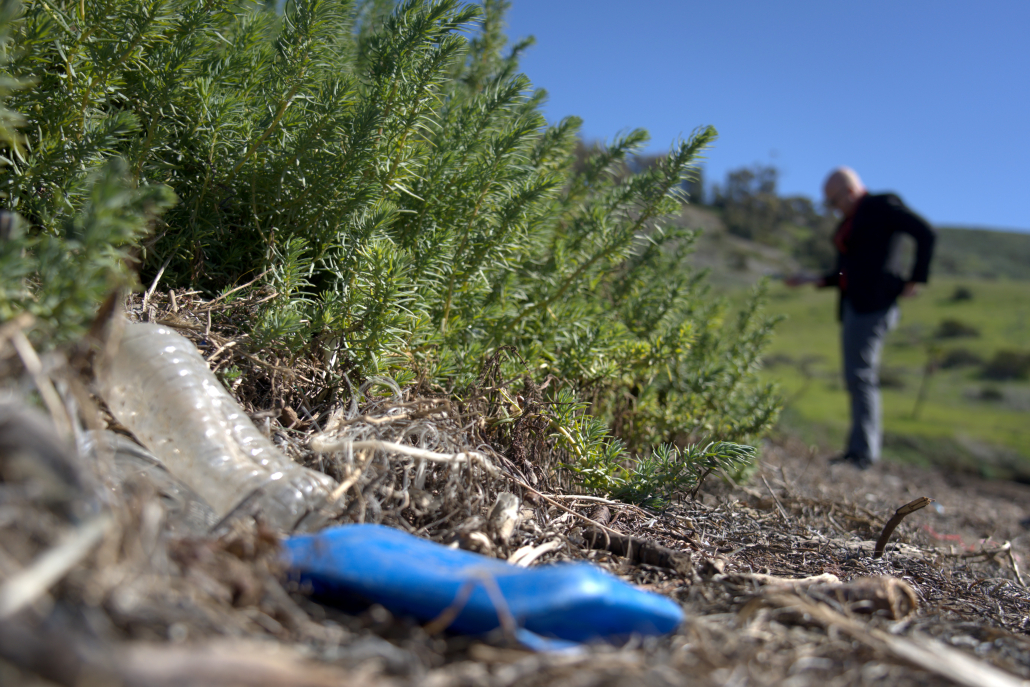Researchers breathe new life into Santa Catalina Island’s trash

Santa Catalina Island, the native-land-turned-tourist-destination renowned for its scenic charm, is now a collection point of the largest accumulation of ocean plastic in the world. Located between Hawaii and California, the Great Pacific Garbage Patch covers an estimated surface area of 618,000 square miles — an area three times the size of France — and contains approximately 80,000 tons of plastic.
Amid ongoing multi-million-dollar cleanup efforts, researchers at the USC Wrigley Institute for Environmental Studies, located on the island, wondered if they could turn the trash into something useful.
“It was a huge and urgent problem,” said Travis Williams, a professor of chemistry. “I’ve been looking at this for several years, and I came to the conclusion that there’s never going to be a chemistry solution to this [issue].”
As such, in collaboration with Clay Wang, a professor and chair of the Department of Pharmacology and Pharmaceutical Sciences, Williams and his team aimed to develop a chemical reaction that would degrade plastic into something that microorganisms could use. Consequently, the two labs devised a two-stage method incorporating chemical and biocatalytic methods that could transform post-consumer mixed plastics into antibiotics, immunosuppressants and other valuable products.
Their paper, published in Angewandte Chemie in November, announced the successful application of the two-stage method to polyethylene — one of the most common categories of plastics, used in products like plastic bags or food packaging — from which they were able to derive pharmacologically active compounds, manufacturing materials and other products in bulk quantities.
“Polyethylenes are one of the most widely used plastics. It is also the hardest sort to crack owing to the chemical structure of it,” said Chris Rabot, lead author of the study and a postdoctoral researcher at Wang’s lab.
To test the efficacy of the upcycling method for polyethylene, multiple student and social organizations, including Boy Scouts of America and students from the Bridge Undergraduate Science Program, collected unprocessed plastic waste from Catalina Harbor as samples for the study, including plastic shopping bags, milk cartons and carryout containers. In the laboratory, researchers then broke down the samples with chemical catalysts and pressurized oxygen to produce diacids, which they dubbed “fungus food.”
Upon feeding engineered strains of Aspergillus nidulans — a versatile, tractable species of fungus used by labs across the world in drug discoveries — with the diacids as a carbon source, the strains produced a significant amount of antibiotics, cholesterol-lowering statins, immunosuppressants and antifungals within a week.

The two-stage method also indicated staggering efficiency during the upcycling process. In the lab, 83% of low-density polyethylene and 54% of mixed ocean plastic is recovered as identifiable fungus food.
“Those are really big numbers when you talk about what are the things we are able to do with ocean plastic,” Williams said.
Given the huge volume of polyethylene found in marine debris and the unsatisfactory recycling rate, the success of upcycling polyethylene is illuminating the same process for other kinds of plastics. Another paper by Williams’ team, published in February in the Journal of the American Chemical Society, tweaked the two-stage method used for polyethylene and successfully upcycled polystyrene, whose uses include protective packaging of CDs and disposable cutlery.
“By applying basically that same reaction that we did for polyethylene toward polystyrene beads, we could turn polystyrene into benzoic acid,” Rabot said. “This allowed basically the same thing to happen, where we convert plastics to a carbon source for fungus.”
Having attained satisfactory results in upcycling two of the most common plastic waste, the team is continuing its research, in coordination with researchers at the University of Kansas, to test the method on “just mixed crap out of the ocean,” as Wang described it.
“We are testing individual materials to see how [they] work in the process and how they can be optimized,” Wang said.
Williams and Wang said they were excited about their discoveries so far, as they would “make a dent in the plastic problem,” Williams said.
“This [method] deals with the plastic that is just trash at the very end of the recycling line,” Williams said. “The other importance is … we’ve got to make something that’s so expensive that you can pay for the cost of the manufacture.”
The upcycling method could also effectively generate a substantial amount of energy from plastic waste that could be used as fertilizer in agriculture across the country, Williams said.
“It’s a last line [of defense], it makes it very valuable and it’s potentially a big scale,” Williams said. “I don’t know another technology that does all of those things.”

